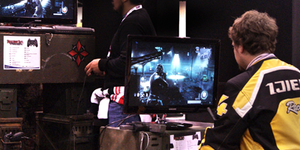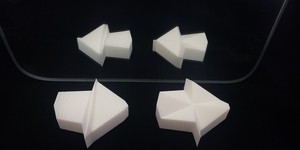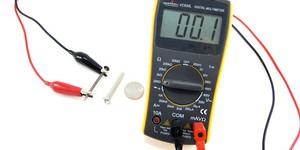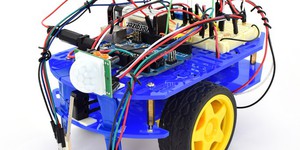Others Like “Foldit: Playing a Game While Solving Protein Structures” (top 20 results)
|
Scientists recently found that some small drugs can stop infection by the deadly Ebola virus in
its tracks. Lab researchers found that these drugs bind to a protein that the Ebola virus uses to enter
our cells, and this is how infection is prevented. However, this also means that the bound protein no
longer functions in our cells. How might these drugs accidentally disrupt important biological processes
in our bodies? What other proteins might these drugs bind to? In this science project,…
Read more
Doctors use many complicated tools to check the health of patients. But you can make some medical tools at home—like a stethoscope! A doctor uses a stethoscope to listen to a patient's heart. In this science project, you will make three of your own homemade stethoscopes and figure out which stethoscope design works best and why.
Read more
The DNA in our cells contains our "blueprints," but it's the proteins in our cells that do most of the work. The Human Genome Project has allowed us to start reading the blueprints, but we still don't understand what most of the proteins do. This is a fairly advanced project that explores ways of identifying the function of unknown proteins.
Read more
Believe it or not, scientists were recently able to recover tissue from a 68-million-year-old Tyrannosaurus rex fossil! Not only were they able to purify non-mineralized tissue, but they also succeeded in obtaining partial sequence information for protein molecules in the T. rex tissue. In this genomics science fair project, you will use the T. rex's protein sequence to search sequence databases for the its closest living relatives.
Read more
The element lead is a neurotoxin that is particularly dangerous to young children. Among other uses, lead compounds were common paint additives until being phased out for safer titanium-based additives beginning in the 1960's. Lead compounds were also added to gasoline to prevent engine knocking, until being phased out beginning in the 1970's. Although paint and gasoline sold today no longer contain lead, soil can have contamination from older sources of lead, such as paint from old…
Read more
Male or female? Fat or skinny? Outgoing or quiet? What is your stereotype of a "gamer"? Do your friends have the same mental picture of gamers? How about your parents? This science fair project will help you examine whether the stereotypes of "gamers" actually matches the reality of who plays video games.
Read more
Have you ever known someone who had a bad reaction to a prescription drug? Although pharmaceutical companies test new
drugs on a large number of people to make sure the drug works the way it is supposed to, often a small percentage of
people respond differently to the drug. A person's genetics plays a large role in determining his or her response to a
given drug.
Our genes are made up of hundreds to millions of nucleotides of DNA (deoxyribonucleic acid),
the genetic code. If just a…
Read more
The Science Buddies project Design Your Own 3D Printed Optical Illusion shows you how to make your own 3D printed "anomalous mirror symmetry" illusions (Figure 1). The illusions are based on the work of Dr. Kokichi Sugihara. You can read his original paper about the illusions in the Bibliography.
Figure 1. Two versions of the "impossible arrow" shape that appears to point to the right while its reflection in the mirror appears to point to the left. Which…
Read more
Measuring the value of a resistor with a multimeter is pretty simple. You set the multimeter to measure resistance, connect the two leads to the resistor (possibly using some handy alligator clips), and read the resistance value. This is called a two-point measurement (one probe on each of the two resistor leads). But what if the resistance you want to measure is very small, in the milli or micro-ohm (mΩ or μΩ) range? This can introduce problems because many low-cost multimeters…
Read more
The Science Buddies Bluebot Kit contains parts to build four different robots:
A motion-activated robot that uses a passive infrared (PIR) sensor
A light-tracking robot that uses photoresistors
A line-following robot that uses infrared emitter-detectors
An obstacle-avoiding robot that uses bump sensors
However, in each project, the sensors are hard-wired to control the robot's motors. This allows the robot to steer left and right based on input from two sensors, but it does not allow…
Read more
|
Explore Our Science Videos
3D Printing with Sand and Glue (no 3D printer required!)
How to Measure Light with Google's Science Journal App
Build a Wind-Powered Car














